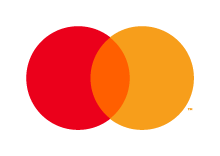Primary Colour Theory Made Simple
We’re going back to basics, exploring colour theory with the three primary water-soluble EazyColours: Red, Blue, and Yellow.
You may already be seasoned in the art of colour theory which is great, but we know many people are not as aware of how to blend, mix or pair colours together in their own products. This guide aims to maximise the potential when buying our water soluble colours.
As you can see from the colour wheel Red, Blue and Yellow are known as the Primary colours. These are the main building blocks of every colour created. The next set of colours are the Secondary colours these are the combinations of 50% each of two Primary colours to create a brand secondary one.
How to use EazyColours Water Soluble Colours
EazyColours Water Soluble Colours can be used in a multitude of rinse-off and leave-on products, and when water activates them they intensify in colour. This can be seen especially in bath bombs. To get the most out of your EazyColours Water Soluble colourants we have written this guide to help you.
What is 'blooming' and what does 'blooming' colours mean?
When you add EazyColours to your recipe not much happens until your product hits the water; that's when EazyColours comes alive and you see how vibrant they are.
Water Soluble Colours - The Basics
When you choose EazyColours water-soluble colours, you’re getting industrial-strength, highly concentrated powders. They come straight from the manufacturing plant, so when we say they’re deeply saturated and a little goes a long way, we mean it.
Another thing to note is the weight of our powder colours. Each EazyColours water-soluble shade has a different density, so the same weight can look very different in volume. For example, both powders shown below are 25g, yet one clearly takes up more space than the other.
These powders may look the same, but don’t be fooled. EazyColours come straight from the manufacturing plant, without dilution or uniform processing. Their real character only appears when they meet water. The images below show their true colours once activated.
Cosmetic Colours: what are they & how to use them
EazyColours additives fall into two main categories: dyes and pigments. Water-soluble colours are classed as dyes, while Lakes and mineral micas are classed as pigments. The key difference comes down to solubility—dyes dissolve in water, whereas pigments disperse in oil.
What do FD&C and D&C mean after some colours?
These letters indicate where a colour additive can be used. FD&C means it’s approved for Food, Drugs, and Cosmetics. D&C means it’s approved for use in Drugs and Cosmetics only—not in food.
Azo Dyes – What Are They?
Colour plays a huge role in textiles, food, printing, pharmaceuticals, and cosmetics. Azo dyes are popular because they’re easy to use, affordable, and produce bright, strong colours. There are around 2,000 different azo dyes on the market, making them one of the most widely used groups of dyes in modern chemistry.
Also called nepthol or azoic dyes, they’re most commonly found in shades of brown, red, and yellow. Chemically, they’re synthetic compounds built around an azo group — two nitrogen atoms joined together. The name “azo” comes from the old French word azote, meaning nitrogen.

Discover More at AW
Discover More at AW
AW Family
AW Aromatics Ltd
Block B Parkwood Business Park, 75 Parkwood Road, Sheffield, South Yorkshire, England, S3 8AL
Company Number: 12796117
VAT: GB356317102
EORI: GB356317102000




Copyright © 2024 AW Aromatics Ltd., All rights reserved.